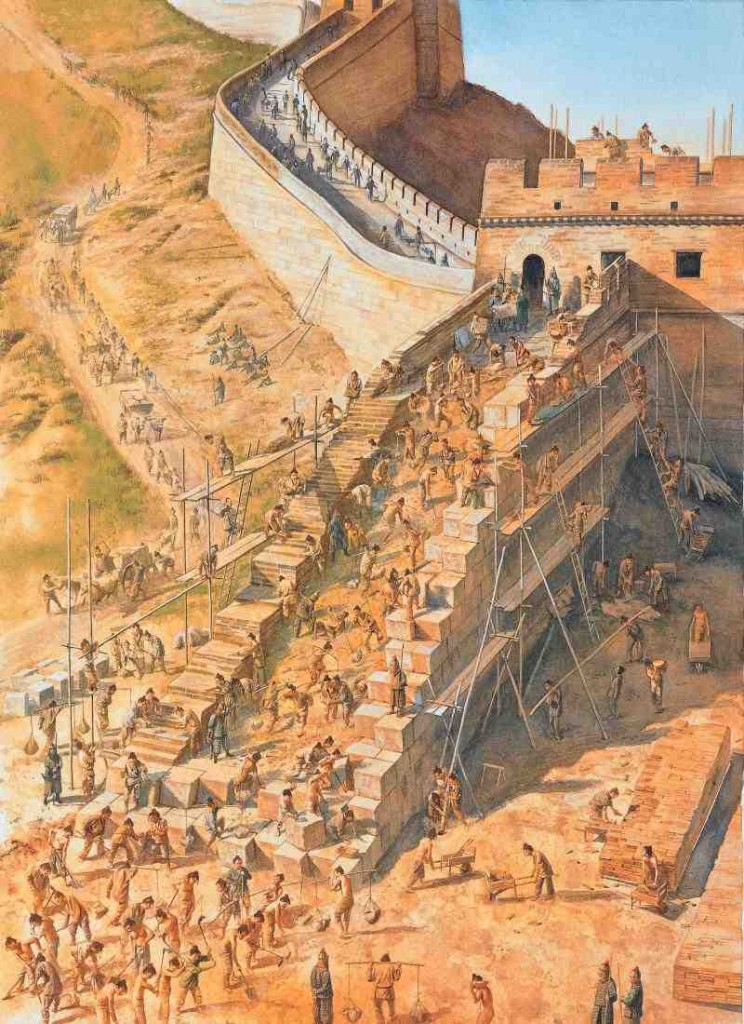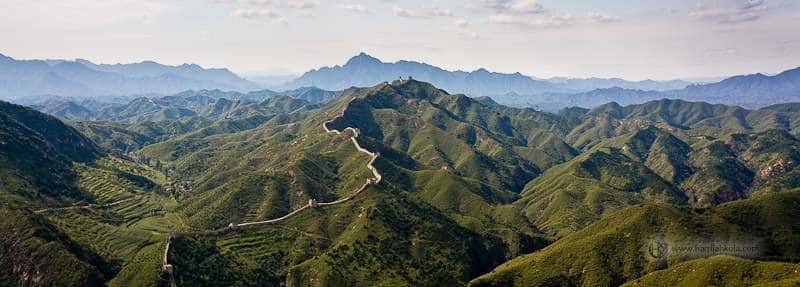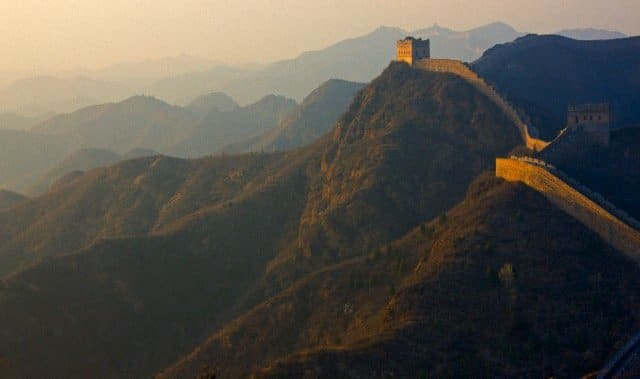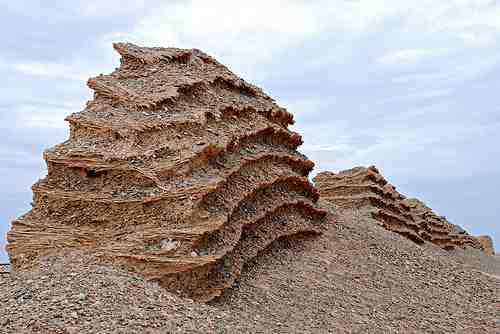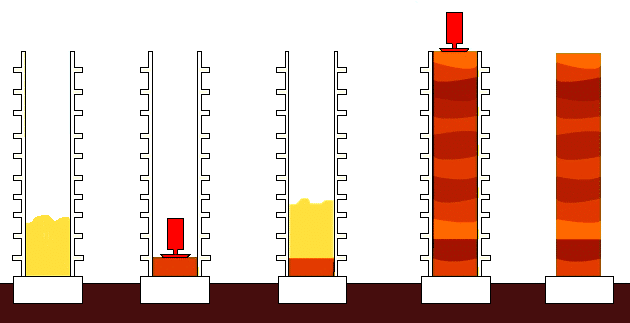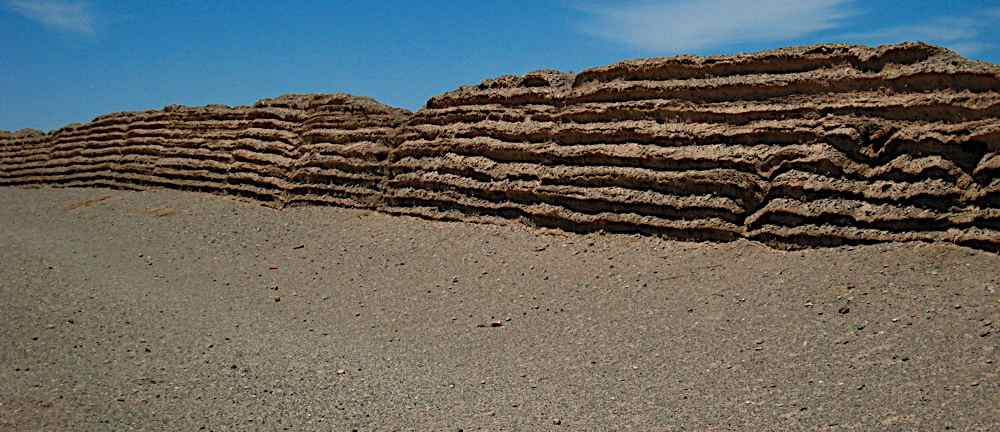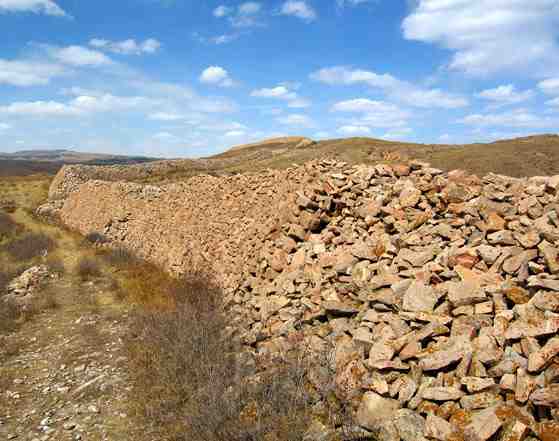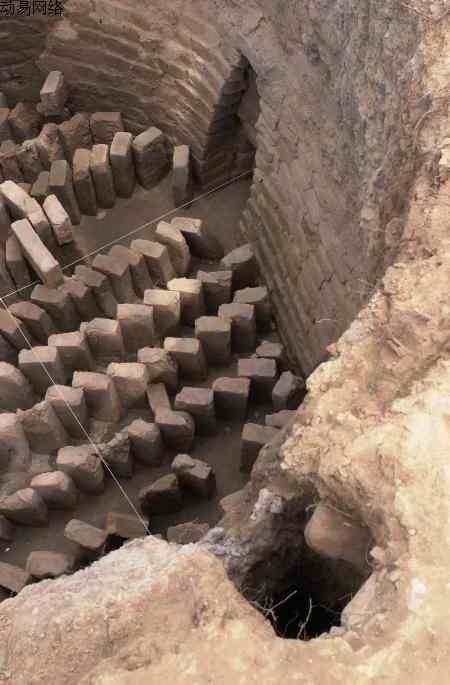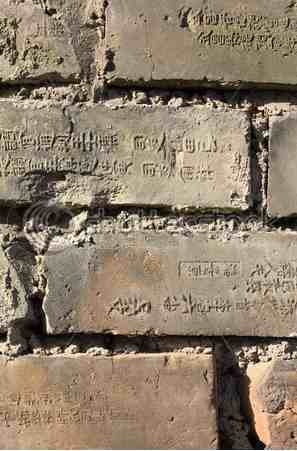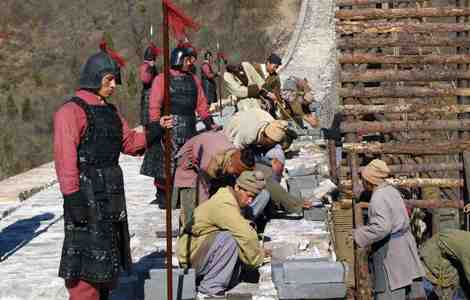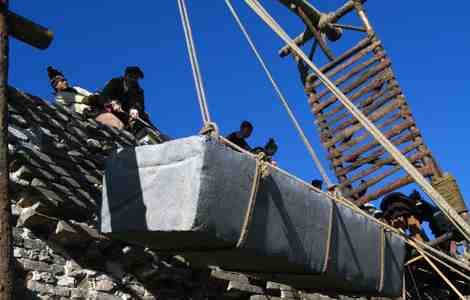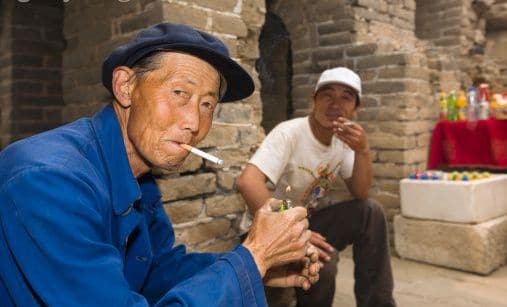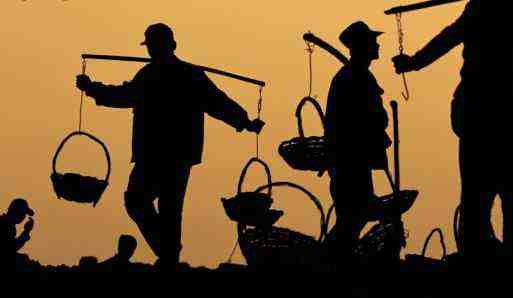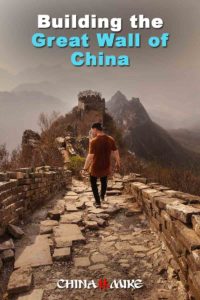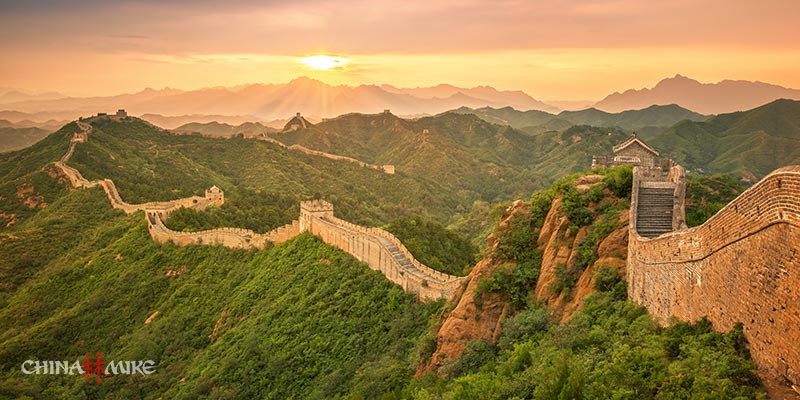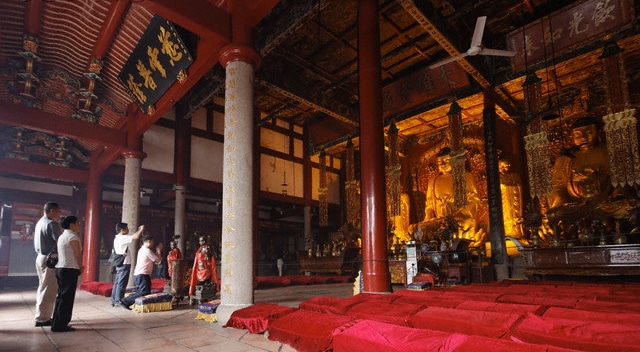Building The Great Wall of China remains one of the most incredible feats of engineering the world has ever seen.
Because the Great Wall of China was constructed by different dynasties over the past two millennia, it’s difficult to condense the timeline into a single story. The history is different depending on:
- Which section of the Great Wall you’re referring to?
- Which period of time/dynasty?
Throughout the centuries, construction techniques naturally grew more advanced as different dynasties repaired and built on the earlier walls.
In fact, a careful study of the history of the Great Wall of China alone can provide good answers to the question how was the Great Wall of China built. It’s an interesting look at the evolution of Chinese construction design and methods.
- The Modern Great Wall: Most people conjure up images of the mighty stone edifices near Beijing. These modern Ming-era walls were built during the 15th and 16th centuries and are by far the most impressive and reflect the most advanced construction techniques and materials.
- The Early Great Wall: The early sections of the Wall, first built 2,000 years ago, were naturally much less sophisticated and sturdy. The vast majority of these early sections of the wall have disappeared after so many centuries of erosion.
How was the Great Wall of China built? Whether you plan to visit the Great Wall of China or you’re just doing research, here is the history, facts and legends surrounding the construction.
Using Natural Terrain to Construct the Great Wall
As with the modern Ming-era sections, the early builders of the Great Wall used the natural, mountainous terrain to their maximum advantage.
Visitors to the Great Wall today will notice that the walls are typically built on top of high mountains, using steep embankments to their defensive advantage whenever possible.
In fact, much of the Great Wall was constructed along the Himalayan Mountain Range, which provided a natural defense (but of course, construction on mountainous terrain was certainly not easy).
On a wider geographical scale, China would be protected from any northern invaders by the Tibetan Plateau to the west and by the Pacific Ocean to the east.
A passage in the Shi Ji (“the records of the grand historian”) describes this sensible engineering approach to the construction of the “first” Great Wall during the Qin Dynasty in 215 BC:
“(General Mian Tian) utilized the natural mountain barriers to establish the border defenses, scooping out the valleys and constructing ramparts and building installations at other points where they were needed.”
Later dynasties applied this same strategy during subsequent construction efforts.
Great Wall of China: Early Construction Materials and Techniques
The early walls, mostly from the Warring States Period as well as the Qin and Han dynasties, consisted of mainly rammed earth.
While this may sound like flimsy construction materials, these early walls were surprisingly sturdy (fragments exist today despite millennia of erosion in harsh climates).
The Chinese were using this rammed (or tamped) earth technique as far back as the Yangshao culture (circa 5000-3000 BC). Suffice it to say, the Chinese were pretty good at building sturdy city walls or fortifications along their borders.
Because of its local availability, the majority of the Wall was constructed out of “loess” or clay-rich soil—using an ancient wall-building technique called hangtu.
Here’s the basic technique: Pour earth and gravel inside removable wooden shutters (like you would pour concrete today). Tamp it down one layer at a time and repeat.
Each layer started out at about 7 inches (18 cm) before being compacted down to 5 inches (13 cm). These rammed-earth walls stood up particularly well in arid areas.
Other Construction Materials for The Great Wall
Constructing the Great Wall in the desert, however, presented its own set of challenges. With lots of sand and little else, the builders had to improvise.
The solution?
They made use of gravel as well as native desert plants, especially the tamarisk plant.
Used in tandem, they created surprisingly strong composite building materials by adding in decayed plant matter for added fibrous support (and also increased strength by building a layer of branches between layers). To this day, you can see ruins of Han-era walls in the desert that stand up to 10.5 feet tall (3.2m).
Other areas of the wall were primarily stone walls, which were built in China for several millennia.
The earliest walls were drywall structures without any mortar. But when carefully arranged on top of each other, they became sturdy rock walls that reached 6m high.
Mortar was later added to increase sturdiness and prevent plants from growing in between cracks.
Much later, during the 15th and 16th century walls of the Ming Dynasty, large blocks of granite, limestone, and even some marble was locally quarried and used as main construction materials.
In some rare spots along the wall, Ming builders added ornamental carved bas-reliefs and plaques. In the sections close to Beijing, these can be seen today on Yun Tai (Cloud Platform) at Juyonguan Pass, as well as on the Yanhecheng Wall.
Ming Dynasty’s Great Wall of China
By the time the Ming Dynasty rolled around in the 14th century, Chinese construction design and techniques had made a quantum leap in sophistication.
The Ming walls were built mostly with standard sized bricks, huge granite blocks, and locally quarried rocks. These impressive Ming sections of the Great Wall stand about 25 feet (7.5 m) high, and anywhere from 15-30 feet (4.5-9m) wide at the base.
For the first time, kiln-fired bricks were used in the construction (see the brick-firing kiln in the photo above). About four times larger than a modern brick, these Ming bricks were mass-produced by a network of kilns, some of which are still in existence.
To ensure maximum strength through dehydrating all moisture, they fired huge stacks of bricks for seven days at temperatures around 1150 degrees Celsius.
Visitors to the Great Wall might notice that some bricks are stamped with a name and/or date to ensure quality control.
Modern studies have found the bricks and mortar to be surprisingly sturdy. The mortar was made from a mixture of clay, lime, and a “secret ingredient” (recently discovered to be rice flour).
Massive Manpower (i.e. “You thought your job sucked…”)
How was the Great Wall of China built in terms of manpower?
One downside to using these more sophisticated modern materials was that it required more manpower to transport the bricks to the mountainous terrain (compared to using locally available raw materials).
During the height of the Ming construction, it was estimated that almost one out of every three adult males was conscripted to work on The Great Wall.
One thing that apparently didn’t change much throughout the centuries was the fact that Chinese rulers could order hundreds of thousands of its citizens to work of these epic construction projects.
Entire towns sprouted up along the Wall to become industrial areas for blasting rocks and firing bricks, as well as to house and feed all of the workers.
During the great building efforts of Qin, Han and Ming dynasties, there was even a specific punishment for convicted criminals to work on the Great Wall of China.
Great Wall scholars discovered records during the Ming dynasty saying that if a convicted criminal died while working on the wall before his sentence was over, he had to be replaced by another member of his family (talk about tough love).
In addition to prisoners, peasants were conscripted to leave their hometowns for literally years of backbreaking hard labor. Throughout China’s long history, countless peasants were “generously” exempted from taxes in return for years of toil.
Unfortunately, surviving historical records fail to provide us with any accurate estimates of how many total people worked on China’s Great Wall.
Great Wall scholars believe it’s likely that millions of people worked to build what we know as the Great Wall of China.
During the first construction effort alone, Qin records tell us that about 300,000-500,000 soldiers in addition to 400,000-500,000 laborers were conscripted (other records suggest that up to 1.5 million men were used during the peak of Qin construction).
China’s Great Wall: Myth and Legends
Whatever the actual total number of men working on China’s Great Wall, it’s undeniable that its construction over the centuries has undoubtedly cost countless lives and caused untold suffering by Chinese families throughout China’s long history.
It’s not surprising then that the “longest cemetery on earth” has long been the subject of Chinese myths and legends.
After the legendary suffering of the men who built the first Wall during the cruel reign of the Qin dynasty, a poem from the following dynasty (Han) warns:
“If a son is born, mind you don’t raise him!
Han Dynasty poem
If a girl is born, feed her dried meat.
Don’t you just see beside the Long Wall?
Dead men’s skeletons prop each other up.”
Similarly, a poem from the Song Dynasty describes the Great Wall of China as so tall since it was built with the bones of dead peasants.
Some have taken this literally. Another enduring myth is that human bones from dead workers were ground up to make the mortar to build the wall.
Great Wall scholars, however, point out that no bone fragments have ever been discovered in the Wall (also actual grave pits near the Wall have been discovered).
It was true, however, that in most cases, the bodies of dead workers weren’t returned to their home villages to be buried. This was considered a great act of sacrilege at the time, since the Chinese believed (and still do) that if not buried in their home village with ancestors, a person’s soul would become lost and forced to wander as a hungry ghost.
Great Wall Legend of Meng Jiangnu’s Tears
A famous legend tells the story of Meng Jiangnu, a woman whose husband was sent far north to work on the Great Wall just days after being married.
Worried about the upcoming winter, she sets out on a long journey to bring him some warm clothes. But when she arrives, she finds out that he died from hunger and overwork.
An old man tells her that because too many workers died to be buried properly, they were buried in a pit under the Wall. Inconsolable, she breaks down in tears and starts pounding on the Wall.
Her grief mysteriously caused the Great Wall to split open, revealing hundreds of dead laborers. She retrieves her husband’s bones and takes them back to their village for a proper burial.
How Was the Great Wall of China Built?
As you can see the construction of the Great Wall didn’t happen during a single period of time and there wasn’t a single kind of construction method.
What we know of the Wall today is a collection of various builds done over the past two centuries.
It required millions of workers, many of whom gave their lives. Sadly, the Great Wall of China was never very effective at keeping invaders out.
If the story behind the construction of the Great Wall of China and the materials used has been of interest to you, you might also enjoy these further resources:

